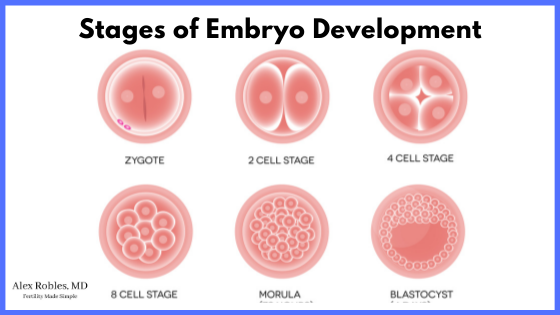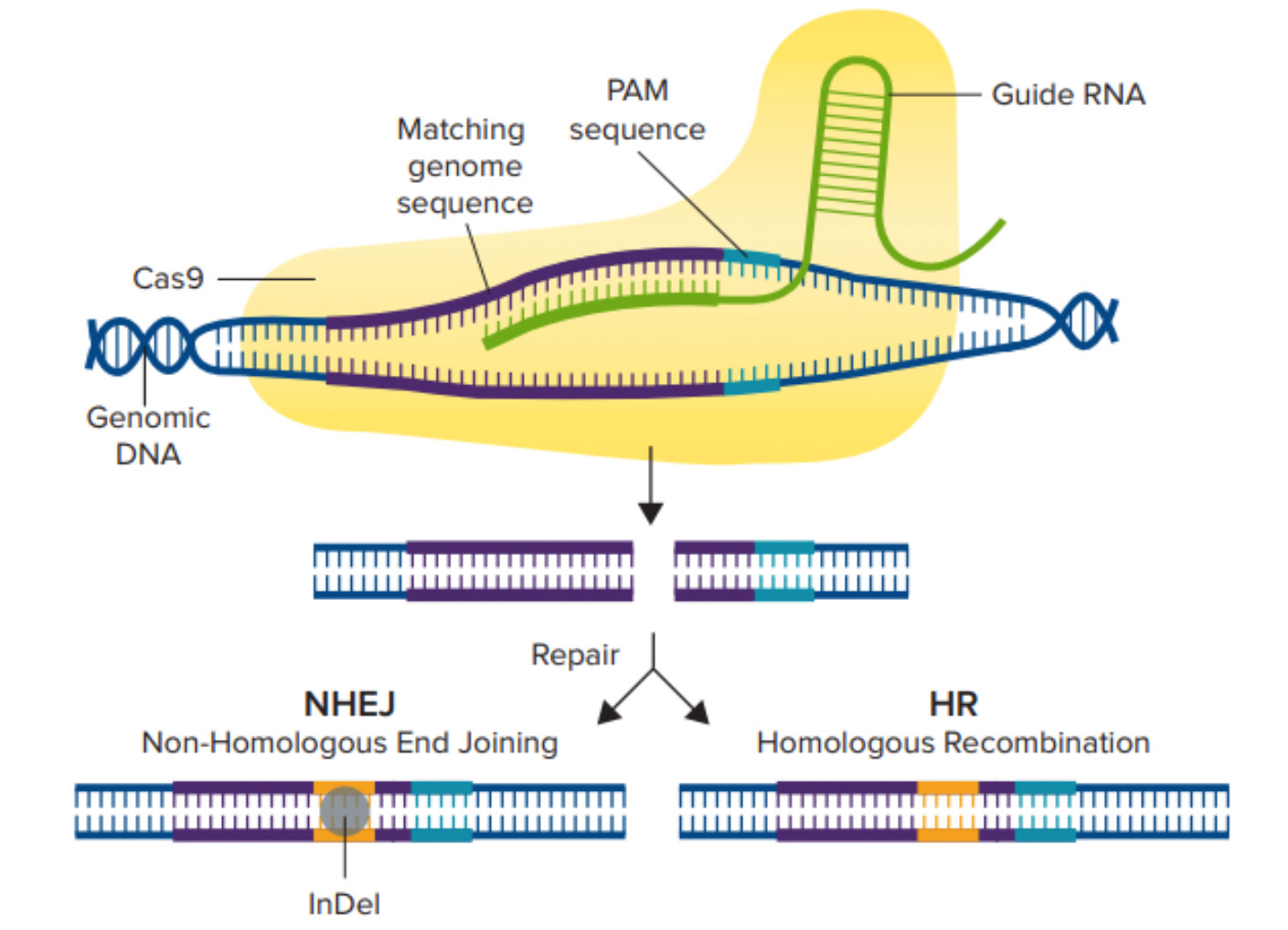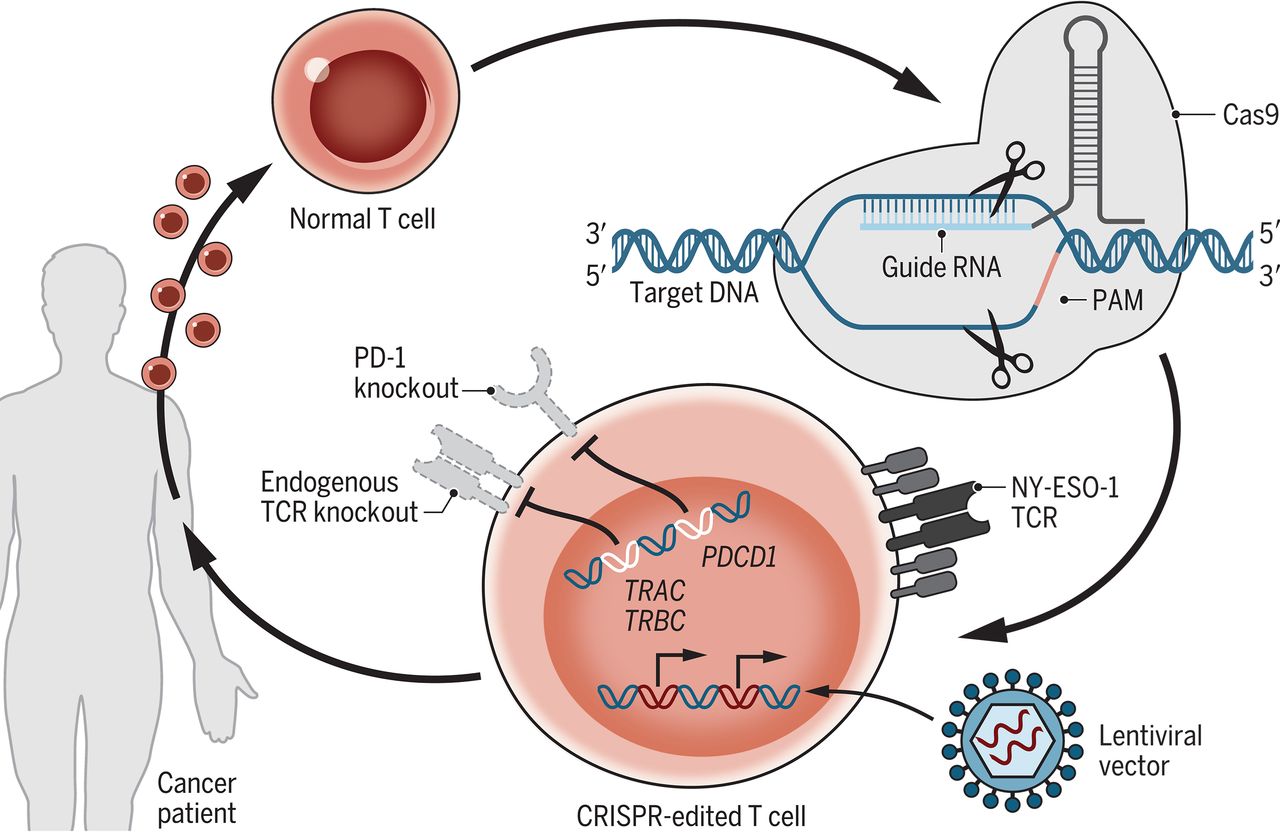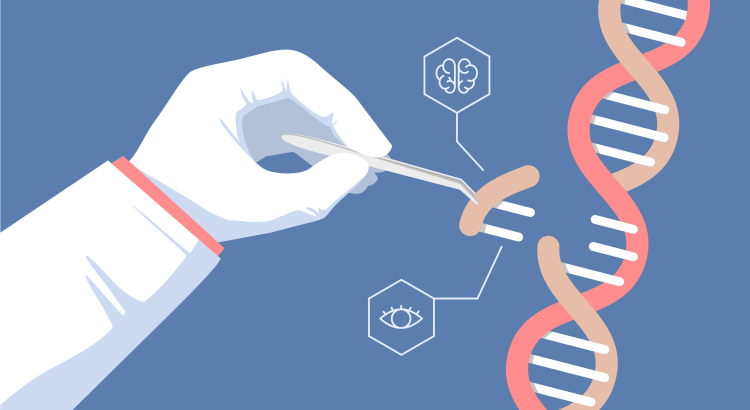By Charalampos Karouzos,
Scientific research in the field of biology and medicine has been an arduous and challenging path to follow. We started by making theories about simple everyday phenomena, understanding them, and finally proceeded to explain more complicated concepts. From the identification of the primary form of life, the cell; to understanding how a very complicated system of trillions of cells functions as a whole; understanding humans. The incredible advancement in biological and medical knowledge, however, is not a work of many centuries as most of the important discoveries are only a few decades old. In this rapid blooming of knowledge, we have reached a critical impasse; studying and experimenting on human embryos with the usage of novel approaches such as the CRISPR-Cas9 system has raised many ethical and social concerns, creating an area of conflict and a novel barrier to scientific research.
To begin, according to the medical literature, an embryo is defined as a new organism in the earliest stage of development. This term refers to the growing organism in humans from the fourth day following conception to the end of the eighth week; following this time, the unborn child is typically referred to as the fetus. Additionally, scientists use the term pre-embryo to refer to the initial state of development, lasting up to day 14 of development, during which the pre-embryo is a mass of undifferentiated cells, named stem cells (totipotent stem cells). It is well known that to create a human embryo we need a specialized cell from males, the sperm, and from females, the oocyte (egg), and their combination will create the first cell of an organism, the zygote. After the zygote is formed, many important changes occur to firstly prevent other sperm cells from entering the oocyte, and secondarily initiate the processes of embryo development. These processes are crucial for the development of all the cells of the future newborn and thus understanding these processes can enhance our treatment options for many different conditions.

The limit to experimenting in embryos was previously set to be the 14th day of development, which is the point when the primitive streak and the initial differentiation of the body to head-tail and right-left begins. Up to this point, the pre-embryo is a mass of undifferentiated cells that hold the potential of becoming specialized and eventually forming a fetus. However, in May 2021, the International Society for Stem Cell Research (ISSCR) brought forward new guidelines on research. The 14th-day rule has not been changed but its previous very strict enforcement has been relaxed. This slight change allows researchers, in countries where it is legal, to continue experimentation past the 2 weeks mark, after which the embryo becomes more human-like in its appearance and the basic structures of the organ systems start to develop. Although technically it is legal to advance research in the later stages of development of the embryo, practically only a handful of research teams can in practice mimic the physiological conditions of the uterus and advance development in vitro (test tube), due to the high difficulty of mimicking the physiological uterus.
Further studying these later stages of embryonic development would allow scientists to better understand the nearly one-third of pregnancy losses and numerous congenital birth defects thought to occur at these points in development. In addition, these stages hold clues to how cells differentiate into tissues and organs, which could boost regenerative medicine. Brivanlou, a recognized researcher in the field, states that he wants to unlock the genetic program that turns stem cells into the first brain cells and wants to reveal the molecular instructions for a four-chambered beating heart. These discoveries will be helpful in creating organs for transplants and many other applications yet to be seen. Supporter of the further exploration of the previously untouched field of human embryo experimentation is also the great stem-cell biologist and embryologist at the Austrian Academy of Science’s Institute of Molecular Biotechnology in Vienna, Nicolas Rivron. He states that “Embryos are the great masters; they are the structures that teach us everything about how we are formed and how we fail”.

Undoubtedly, further research is the force that drives the treatment of patients and in general medicine forward. However, regarding human embryo experimentation, many ethical concerns have been raised by social and scientific groups, halting the progression of the studies. The major issue lies in the difficulty of setting the point at which life starts. Cells of the embryo, even in the initial stages, do not consist of a living organism but have the potential of becoming one if implanted into a woman’s uterus at the appropriate hormonal phase. Most people support the middle ground of human embryo experimentation, meaning that embryos, although not humans yet, develop into one, and thus their rights must be established and respected; at the same time, research with good justification should be allowed up to a limit.
Opposing the experimentation with embryos are mostly strongly religious people that consider the beginning of life at conception, hence embryos discarded are being murdered. Many would believe that opponents of abortion, the pro-life movement, are also against such research, however, as the longest serving US Republican Senator Orrin G. Hatch stated: “The support of embryonic stem cell research is consistent with pro-life, pro-family values. I believe that human life begins in the womb, not in a Petri dish or refrigerator… To me, the morality of the situation dictates that these embryos, which are routinely discarded, be used to improve and save lives. The tragedy would be in not using these embryos to save lives when the alternative is that they would be discarded”.

T cells (center) were isolated from the blood of a patient with cancer. CRISPR-Cas9 ribonuclear protein complexes loaded with three sgRNAs were electroporated into the normal T cells, resulting in gene editing of the TRAC, TRBC1, TRBC2, and PDCD1 (encoding PD-1) loci. The cells were then transduced with a lentiviral vector to express a TCR specific for the cancer-testis antigens NY-ESO-1 and LAGE-1 (right). The engineered T cells were then returned to the patient by intravenous infusion, and patients were monitored to determine safety and feasibility. PAM, protospacer adjacent motif. Image source: science.org
Researchers have tried to bypass the ethical hitch of human embryos by using stem cells originating from adult humans and reverse engineering them into more undifferentiated cells. Such methods have been surprisingly effective in mimicking embryo cells and in some experiments, cells started to organize and form a new embryo. Although research in the field is not mature enough it seems to be promising to bypass ethical concerns and provide us with the knowledge to be applied to patients. To further complicate the issue, however, novel developments in biotechnology like the 2020 Nobel award, and the CRISPR-Cas9 system, although considered a breakthrough research tool, the concerns raised by the public might eventually be the ultimate restrain.
References
- Carolyn Brokowski, Mazhar Adli, CRISPR Ethics: Moral Considerations for Applications of a Powerful Tool, Elsevier Ltd., 2018.
- Kendall Powell, What’s Next for Lab-grown Human Embryos?, Nature Scientific Journal, vol. 597, Springer Nature Limited, 2021.
-
Hong Ma, Nuria Marti-Gutierrez, Sang-Wook Park, Jun Wu, Yeonmi Lee, Keiichiro Suzuki, Amy Koski, Dongmei Ji, Tomonari Hayama, Riffat Ahmed, Hayley Darby, Crystal Van Dyken, Ying Li, Eunju Kang, A.-Reum Park, Daesik Kim, Sang-Tae Kim, Jianhui Gong, Ying Gu, Xun Xu, David Battaglia, Sacha A. Krieg, David M. Lee, Diana H. Wu, Don P. Wolf, Stephen B. Heitner, Juan Carlos Izpisua Belmonte, Paula Amato1, Jin-Soo Kim, Sanjiv Kaul, Shoukhrat Mitalipov, Correction of a pathogenic gene mutation in human embryos, Nature Scientific Journal, vol. 548, Springer Nature Limited, 2017.




